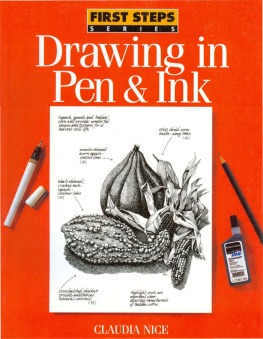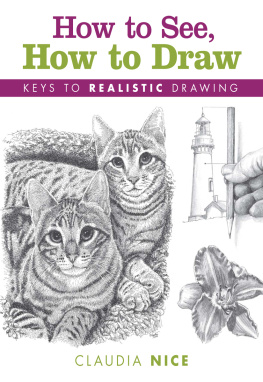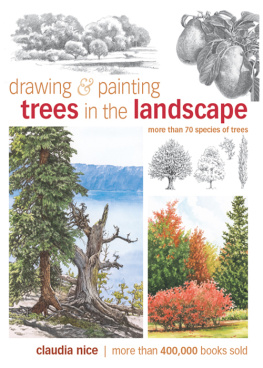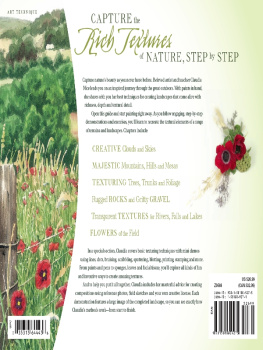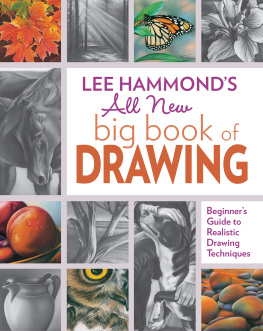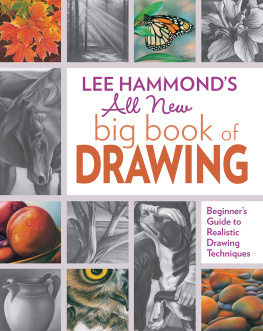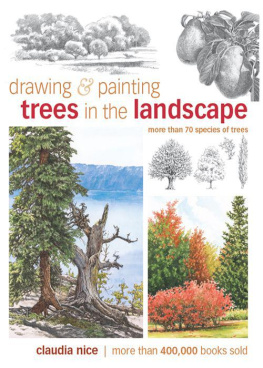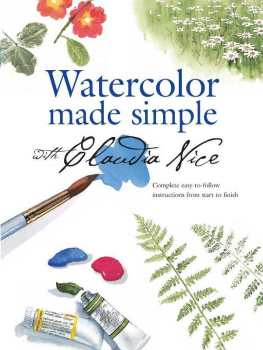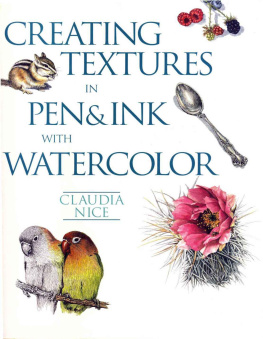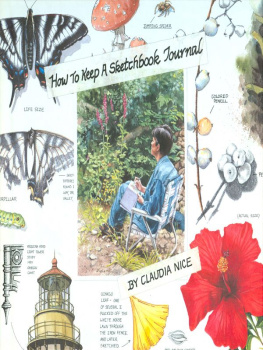FIRST STEPS
SERIES
Drawing in Pen & Ink
CLAUDIA NICE

NORTH LIGHT BOOKS
Cincinnati, Ohio
www.artisttsnetwork.com
Acknowledgments
This book is the result of many who have helped me on my way. Susan Scheewe and Tony Murray who encouraged my beginning efforts. Greg Albert, David Lewis, Rachel Wolf, Kathy Kipp and my numerous friends at F + W Publications who have smoothed my pathway and made authorship a joy. Thank you.
Drawing in Pen and Ink. Copyright 1997 by Claudia Nice. Manufactured in China. All rights reserved. No part of this book may be reproduced in any form or by any electronic or mechanical means including information storage and retrieval systems without permission in writing from the publisher, except by a reviewer, who may quote brief passages in a review. Published by North Light Books, an imprint of F + W Publications, Inc., 4700 East Galbraith Road, Cincinnati, Ohio 45236. (800) 289-0963. First edition.
Other fine North Light Books are available from your local bookstore, art supply store or direct from the publisher.
Library of Congress Cataloging-in-Publication Data
Nice, Claudia
Drawing in pen and ink / by Claudia Nice.
p. cm.(First step series)
ISBN 13: 978-0-89134-717-0 (pbk.: alk. paper)
ISBN 10: 0-89134-717-8 (pbk.: alk. paper)
1. Pen drawingTechnique. I. Title. II. Series: First step series (Cincinnati, Ohio)
NC905.N523 1997 96-52947
741.26dc21
96-52947
CIP
Edited by Joyce Dolan
Production edited by Kathleen Brauer and Bob Beckstead
Designed by Brian Roeth
Cover photography by Pamela Monfort Braun/Bronze Photography

Dedication
I dedicate this book to my students, who have inspired me more than they know. May their enthusiasm take them far and the joy of creation shine often upon their faces.


Table of Contents
Chapter One
MATERIALS
All about the materials you need to start drawing right away.
Chapter Two
BASIC TECHNIQUES AND EXERCISES
Learn the basics through simple exercises.
Chapter Three
SKETCHING
Have fun learning how to sketch objects, trees, animalsall the things around you.
Chapter Four
PUTTING IT ALL TOGETHER
Fourteen step-by-step projects show you how to compose and draw still lifes, people, animals and landscapes.

Introduction
Everyone must start their artistic adventure at the beginning. Mine started with a box of crayons and a newsprint tablet. Grade school brought the excitement of tempera paint. In high school, I found the joys of watercolors, oils, pastels and the crow quill ink pen.
My favorite subjects were found outdoors. I carried the humble dip pen, a bottle of India Ink and a sketchbook with me into the field. And there, beneath open skies, surrounded by nature, I learned to sketch. While nature impressed and inspired me, the mistress of mistakes slowed me and showed me how to begin again. Those valuable failures were given to experience and the successes have been repeated, improved and committed to memory. From experience comes stylea bit of what the eye sees, the heart feels and the mind interprets flowing through the hand and pen, onto the paper. This to me is art.
If you have a yearning to pick up a pen and gather some creative experience of your own, there is no need to sketch alone. Through this book I would like to share and encourage your first basic steps. And if it makes your artistic pathway a little smoother, it will have accomplished its purpose. So take courage, learn to observe, feel free to experiment and above all, relax and find joy in what you do.
Best Wishes,

Claudia Nice

Chapter One
MATERIALS
Pen, ink and paperthats all you need to get started. The simplicity of the tools makes pen and ink the ideal medium to carry along in a purse, pocket or backpack, so when an artistic mood strikes, youre ready to sketch.
Fountain pens, felt tip markers, fiber tip pens, ballpoint pens, reeds and feather quills will all work as inking tools with varying degrees of success. More than once I have softened and frayed the end of a twig and used it to make a rough ink applicator, when I was far from my studio and my real pen was misplaced. The results were crude, but the experience was fun.
In the old days, bird feathers were the tools of choice for both writing and ink sketching. Generally duck quills were used, but when a finer line was desired crow quills were selected. The ends of the quills were sharpened to a point with a penknife. The quill tip was dipped into ink and the hollow feather shaft held enough fluid for several strokes.
Inks were also homemade. Crushed walnut shells simmered with vinegar and salt set the color. Oak tree galls brewed with iron salts produced a dark, rich tannin-based ink which was fairly permanent. Soot mixed with shellac produced the first black India inks.
The modern artist has a vast array of pens and inks to choose from. With so many variations available, what inking tools are recommended? The characteristics I look for in an ideal pen are a steady, reliable, leak-free flow and a nib that is precise and can be stroked in all directions. The inks I prefer to use are pigmented, rather than dye based, and are permanent, waterproof and brush-proof.
The Pen
Dip Pens
The crow quill dip pen is an adaptation of the early feather quill dip pens. It consists of a wooden or plastic holder and a removable steel nib. With Hunt nibs no. 102 (medium) and no. 104 (fine), the crow quill will provide a good ink line. The tool cleans up easily and is inexpensive. Its useful for applying colored inks when you want many color changes. However, crow quills are limited in stroke direction, with a tendency to drip and spatter. The redipping process interrupts the stroking rhythm.
Markers
Felt-tip and fiber-tip pens are great for quick sketching because you do not have to wait for the ink to flow down the nib. A good marker is able to keep pace with even the fastest hand. Markers are available in a variety of colors, nib shapes and sizes, and degrees of permanence. They are convenient and economical.
There are a few drawbacks. Markers tend to dry up at the most inopportune times, with little warning. You must always have a backup handy. Markers are not capable of producing extremely fine lines, and are not made to be a replacement for the more precise steel-nibbed pens.
Technical Pens
I consider the technical pen the best inking instrument available. It is an advanced drawing instrument, consisting of a hollow metal nib, a self-contained ink supply (either a prefilled or refillable cartridge) and a plastic holder. Within the hollow nib is a delicate wire and weight which shifts back and forth during use, bringing the ink supply forward. This wire should not be removed from the nib.
Next page
